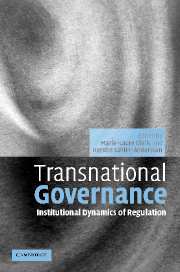Book contents
1 - Introduction: A world of governance: The rise of transnational regulation
Published online by Cambridge University Press: 22 September 2009
Summary
Introduction
On an experiential basis, many of us feel the impact of a “transnationalizing” world. French workers strike to prevent the de-localization of their jobs to Slovenia or China and most clothing in American stores is produced outside the United States. A German university professor is increasingly expected to belong to a transnational peer community and to adapt to career development standards greatly at odds with German academic traditions. What a European consumer gets when she buys chocolate in her local store has been defined and standardized by the European Commission. Companies around the world are going through multiple certification processes and are bound to various categories of standards – efficiency, quality, ethical or environmental ones. The list could be longer and all chapters in this volume provide further evidence of the impact of transnationalization in our daily lives.
As those examples suggest, a transnational world is not about the disappearance of rules and order. Rather, what appears striking about our times is the increasing scope and breadth of regulatory and governance activities of all kinds. The present world has been described as a “golden era of regulation” (Levi-Faur and Jordana 2005). The proliferation of regulatory activities, actors, networks or constellations leads to an explosion of rules and to the profound re-ordering of our world. Organizing and monitoring activities connect with regulation and represent other important dimensions of contemporary governance. New organizations, alliances and networks emerge everywhere.
- Type
- Chapter
- Information
- Transnational GovernanceInstitutional Dynamics of Regulation, pp. 1 - 28Publisher: Cambridge University PressPrint publication year: 2006
- 59
- Cited by



